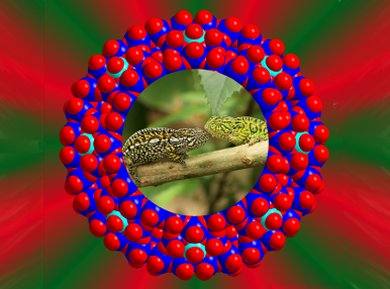The term adaptability is often used in biology but rather seldom in chemistry. Achim Müller, University of Bielefeld, Germany, Erhard Haupt, University of Hamburg, Germany, and colleagues show how two giant wheel-shaped molybdenum oxides of the type {Mo154} and {Mo176} allow the integration of cations and anions. These are, e.g., 64-membered “salt like” {M(SO4)}16 rings with M = K+, NH4+. Both giant wheels are made from the same building blocks using either 14 or 16 of them, respectively. The resulting hybrid clusters remarkably retain the same shape as the parent structures.
The adaptability allows the integration of both anions (SO42–) and cations (Cu2+) even in the same wheel compartments. This leads as in the case above to changes in constitution by reorganisation and simultaneous release of (some) building blocks to fit the salt ring in while maintaining the shape.
This has its counterpart in solutions of “molybdates” that form a unique constitutional dynamic library from which a variety of giant clusters can be isolated.
- Chemical Adaptability: The Integration of Different Kinds of Matter by Giant Molecular Metal Oxides,
A. Müller, A. Merca, A. J. M. Al-Karawi, S. Garai, H. Bögge, G. Hou, L. Wu, E. T. K. Haupt, D. Rehder, F. Haso, T. Liu,
Chem. Eur. J. 2012.
DOI: 10.1002/chem.201203186




